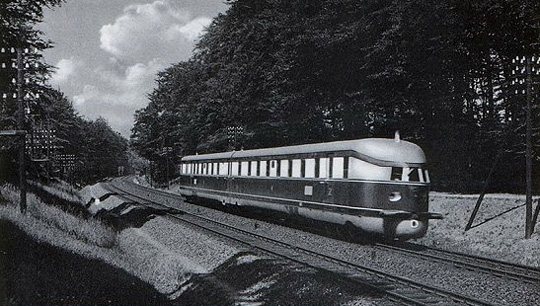Recent evidence suggests that Hitler had a stunning fascination with trains. He hoped to set records by creating the fastest ever made, and employed as much help as possible to aid him in the effort. At that point in time, the British had the fastest trains and Hitler thought it would be a great victory for the Germans if they could take that record away from the British and gain it for themselves.
Nearly two hundred men were hired to help make the locomotives run as fast as possible. Some of the most notorious Nazi officials were included in the team. These officials included Goering, Goebbels, and Himmler, who also had vested interests in the project. These three were usually among the men Hitler turned to on big projects, and his attempt at building trains was no exception. Goering even owned one himself. Believe it or not, this project was not part of the Nazis’ usual propagandist routine aimed at swaying public attitude toward their cause. Rather, the goal was to gain reverence within the German military by appearing more powerful.
At least three different events were held to showcase the speed and power of the Nazi locomotives. These events usually garnered strong numbers in attendance, and were commemorated by Heinrich Hoffmann, private photographer to Adolf Hitler. The trains made their biggest appearance at the 1936 Olympic Games in Berlin, during which Nazi officials as well as numerous civilian spectators showed up to watch them in action.
The most intriguing attempt at breaking the speed record came in the form of the Flying Hamburger. This was a rail coach that, at least according to Joseph Goebbels, ranked among the fastest trains on Earth. When the Flying Hamburger was first revealed, it appeared that Hitler had hit his peak in the competition to break the speed record. His team of engineers drove his locomotives at record speeds, but ultimately lost to Sir Nigel Gresley of Great Britain.
Hitler and his trains did beat Gresley at least once in their numerous attempts to gain the world record. In the end, Gresley topped the German record by only a little under two miles per hour. Gresley still holds the record for the Berlin-Hamburg run, but the attempts made by the Nazis are still an important part of history. While Hitler may have failed to keep the record, his trains still helped the Nazis to achieve the fame that he had wanted.
//
